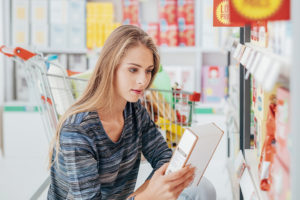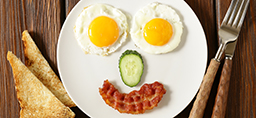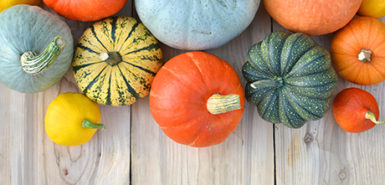
It takes a lot of work to change bad habits.
Change them on your own, you’re up against yourself. Change them as a group—or, as a society—we’re sometimes up against each other.
Conflicting interests. Conflicting personalities. Conflicting expectations.
Take the Food and Drug Administration’s years-long, laborious efforts to update the Nutrition Facts labels on America’s food and beverage products.
The label tweaks include a more granular look at sugar content by adding “Added Sugar” as a subset under “Total Sugars.” If a packaged food contains 12 grams of sugar and it lists 10 grams of added sugars, you can deduce it contains 2 grams of naturally occurring sugars.
The long-awaited changes were set to roll out next month, but that’s been slowed.
In May, the FDA extended the July 2018 deadline for the label revision by 1 1/2 years, pushing it to January 2020 for manufacturers operating in the $10 million-plus bracket. Smaller companies have even longer to comply.
According to the FDA, the new timetable gives food makers time to get their “technical questions” answered and “complete and print updated Nutrition Facts labels for their products.”
Sugar infusion
Many of the associations representing food makers had bemoaned the label update when the FDA proposed them years ago, but the agency pressed on in its work and had established the July 2018 deadline for the new labels.
On the minus side, this latest postponement means you’ll have to wait quite a while longer before every packaged food item unveils its added-sugar content.
On the plus: Many food manufacturers have already adopted the new labels on thousands of items.
The label reboot may be an eye-opener to those who are unaware of just how much sugar food makers routinely dump into seemingly innocuous items.
Yogurt is a good example, said Sarah Flessner, a Spectrum Health registered dietitian.
A healthy plain yogurt may have 5 grams of sugar, but the flavored variety can pack upwards of 20 grams or more. Those are often added sugars, Flessner said.
“I don’t worry about natural sugar,” Flessner said. “I only worry about the added sugar.”
And frankly, you don’t need an enhanced label to understand that high sugar content in packaged, labeled foods is often a harbinger for trouble.
Naturally occurring sugars are most often found in items such as fruit (fructose) and milk (lactose), and they aren’t typically a big concern unless other health problems are afoot. As a starting point in building a healthy diet, Flessner recommends relying on raw, unprocessed food items.
“I’d recommend trying as much as you can to move away from processed foods and go to more of a whole foods diet,” she said.
Inconspicuous confection
In many households, packaged foods are virtually inescapable. A spouse wants them, or the kids want them, or they’re an easy grocery grab that week.
It’s typically easy to spot the items that had added sugar piped into them: cakes, pastries, candy, pies, soft drinks. But sometimes it’s less obvious—particularly when items are slyly packaged as healthier fare.
Flessner recommends scrutinizing the sugar content in these food purchases in particular:
- Pasta sauce
- Salad dressing
- Cereal
- Yogurts
- Bread
- Juices
- Granola bars
When it comes to juice, aim for products that contain 100 percent fruit juice. “We’re not going to worry about the sugar that comes from fruit,” Flessner said.
On breads: “Even just plain bread sometimes has a significant amount of sugar. If it has 3 grams of sugar per slice and you make a sandwich, that’s two slices. The cumulative effect, once you add peanut butter and jelly, is pretty high.”
On Granola bars: “Some of them are just glorified candy bars.” Look for granola bars made from whole grains and high in fiber and protein. If the label is updated, read the added sugar content.
A good example: the Larabar, at 4 grams of added sugar.
“Larabars are fairly high in sugar—16 to 18 grams—but they’re naturally occurring sugars because they’re made with dates,” Flessner said.
Fake sweet, real trouble
Don’t be hard on yourself as you slowly chip away at your sugars, Flessner said. When you forbid certain foods, you may feel more tempted to give into the bad stuff.
“It becomes this vicious cycle, especially for adults who are trying to diet,” she said. “Giving yourself permission to have these foods—enjoying them without guilt—makes it easier to feel like, ‘I don’t always want that type of thing.’”
Flessner offers a parting thought: Don’t jump off the sugar ship and cling to the raft of artificial sweeteners.
They may seem like a handy substitute, but sweeteners only compound the struggle.
“They make things so much sweeter,” Flessner said. “Things that are naturally sweet, like fruit, are no longer as satisfying as something like a candy bar.”
 /a>
/a>
 /a>
/a>
 /a>
/a>
Sugar is addictive! Allowing yourself “some” sugar means you’ll have to manage your cravings. Once you make a clean break from sugar the cravings stop and you’d be amazed at the benefits. I haven’t eaten sugar in over 4 years and I feel great!! It can be done. Check out foodaddicts.org for more information.
I appreciate the awareness this article and new food labeling creates. Good progress!
Great information, thanks for sharing!
Thank you for the great info . I like reading about diet and nutrition. I always look for sugar content on all stuff I buy at the grocery store and always aim for the one with lesser content. In this post I am confused. Does it mean that articles that don’t have ‘ added sugar’ column on the label are not labeled correctly to show sugar in the product ? I only seen ‘sugar’ on the labels, is this misleading than?
Hi Leigha, Thank you for your comment, and for being a Health Beat reader! Our dietitians believe it would be helpful to folks if there was an “added sugar” column on the label to differentiate between added sugars and natural sugars. For instance, applesauce naturally has some sugar content in it because apples have sugar in them – so, perhaps there could be an added sugar column to indicate how much granulated or corn syrup sweetener is added, and then a total sugars, which would be a combination of the natural sugars and the added sweeteners. Natural sugars found in fruits and some veggies are generally better for us than the sugar that’s added. In the meantime, keep watching those labels, Leigha, and pay attention to the ingredients list, too, to see where added sugars fall in the ingredients list… the higher they are on the list, the more of them is added. Does this help? 🙂